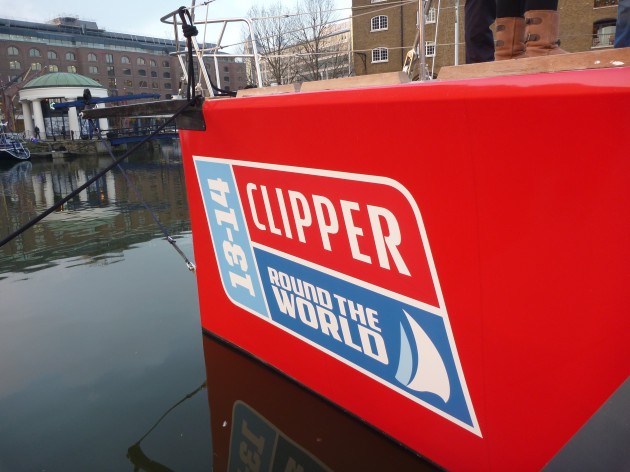And a further timely reminder that amateur offshore racing is putting the pressure on professional events
Clipper Ventures turned heads at the London Boat Show last year when its founder Sir Robin Knox-Johnston unveiled plans for a new boat – it wasn’t what many were expecting for a design that would carry 600 fare paying amateurs around a 40,000 mile course. Before signing up for the longest global race of them all with a course that has two long downwind Southern Ocean legs, around 40 percent of the crew will be newcomers to sailing.
So is a boat with a fixed bowsprit, a slender fine entry and chined stern sections that look like they had been taken off the lines plan of a Volvo 70 or an Open 60, really the right tool for the job? Knox Johnston is adamant that it is.
“I think the penny really dropped for me when I sailed my own Open 60 in the Velux 5 Oceans Race,” he told me. “While Open 60s look pretty extreme, most of the time they’re not difficult to handle and they clearly perform well which left me asking why couldn’t our crews experience the same? Many of them will have seen the modern offshore racers and are clearly aware of what’s out there and quite rightly want to have a go themselves.”
But while there are similarities to the ‘Open’ style, the new Clipper boats are a different beast under the skin. For starters, at 34 tonnes they are more than double the weight. (A VOR70 weighs just 14 tonnes.) The Clipper boats are significantly shallower as they need to be to get into some of the harbours around the world and draw just 3.00m and have fixed non-canting keels. At a full compliment of 22 the Clipper 70s carry more than double the number of crew as well which doesn’t come cheap when it comes to weight saving. Plus the boats are robustly built using conventional composite materials.
Nevertheless, the new boat is around 3-4 tonnes lighter than the previous 68 footers and carries more sail area which is certain to make this new generation significantly quicker than the previous boats.
Her open/trench style cockpit with twin pedestals and wheels along with her flush racing deck are further fundamental details that set her apart from the more conservative layouts of the previous two generations. So too is the move to asymmetric spinnakers flown from the fixed bowsprit. But the move towards this sleeker more racy layout is not simply about looks, but more about a deck that is easier, more efficient and more comfortable to work.
Below decks the accommodation is spartan but functional and reflects the basic fact that only two things other than the sailing will matter when the crews are racing – food and sleep. Here a giant galley occupies the midship area of the boat straddling the centreline, with the rest of the boat dedicated to bunks, two heads, a nav station aft and sail stowage forward.
But for me, the really impressive thing about this boat and the company is when you look at how Clipper Ventures is outperforming the professional scene.
The next race which starts in August this year and is all but sold out, will see 12 identical boats competing, (up on the fleet of 10 last time), with a total of 600 fare paying crew taking part, up on the previous event which saw 400 compete. If the race follows previous trends, 40 percent of the sailors will be women. So far the Clipper race has seen 3,000 people take part made up of 43 nationalities.
So where are the new people coming from and why are they attracted?
“Our UK numbers have remained largely the same,” explained Knox-Johnston, “the biggest growth has been from overseas. The second biggest nationality in the race is Australia. The event has really started to take a hold overseas.
“I don’t think there’s one simple answer as to why people are so keen to take part. Clearly there’s a strong element of challenge, but I think there’s also greater awareness of our event, we have a good reputation and the route’s interesting.”
It certainly is and leads you straight back to Volvo/Whitbread comparisons.
When you look at the first half of the race course which takes the fleet South America, South Africa, Australia and New Zealand making it impossible not to draw similarities the former Whitbread/Volvo route. Ironic really given that the Volvo has been drawn away from the traditional Southern Ocean route in search of commercially viable stopovers.
Here too there are further interesting comparisons. The Clipper race charges all the venues that it visits and while the company won’t disclose the sums, £500,000 is believed to be the figure just for hosting a start.
“The arrival of the fleet has a big economic impact at host venues,” said Knox-Johnston. “Its not just the boats that arrive but the friends and families of the crew plus the impact of the global television coverage that we get.”
Each of the boats has a primary sponsor and the crews all pay for the legs. There is of course nothing new in this concept, but in a week when the Fastnet race sold out in less than 24 hours to a fleet made up predominantly by amateurs, it is yet another example of how this type of racing is thriving.
The big professional gigs like the America’s Cup, Volvo, Vendee Globe and others may be struggling to attract money, venues and entries, but we shouldn’t take this to suggest that yacht racing is in crisis.
It isn’t. The new Clipper 70 may look like a modern grand prix offshore racer but behind the scenes she’s very different, for all the right reasons.




